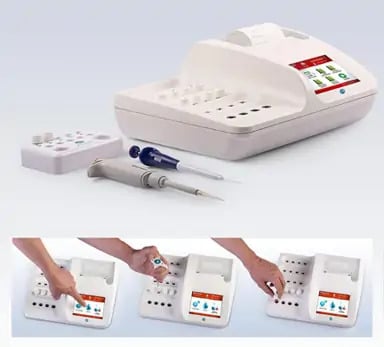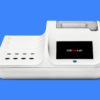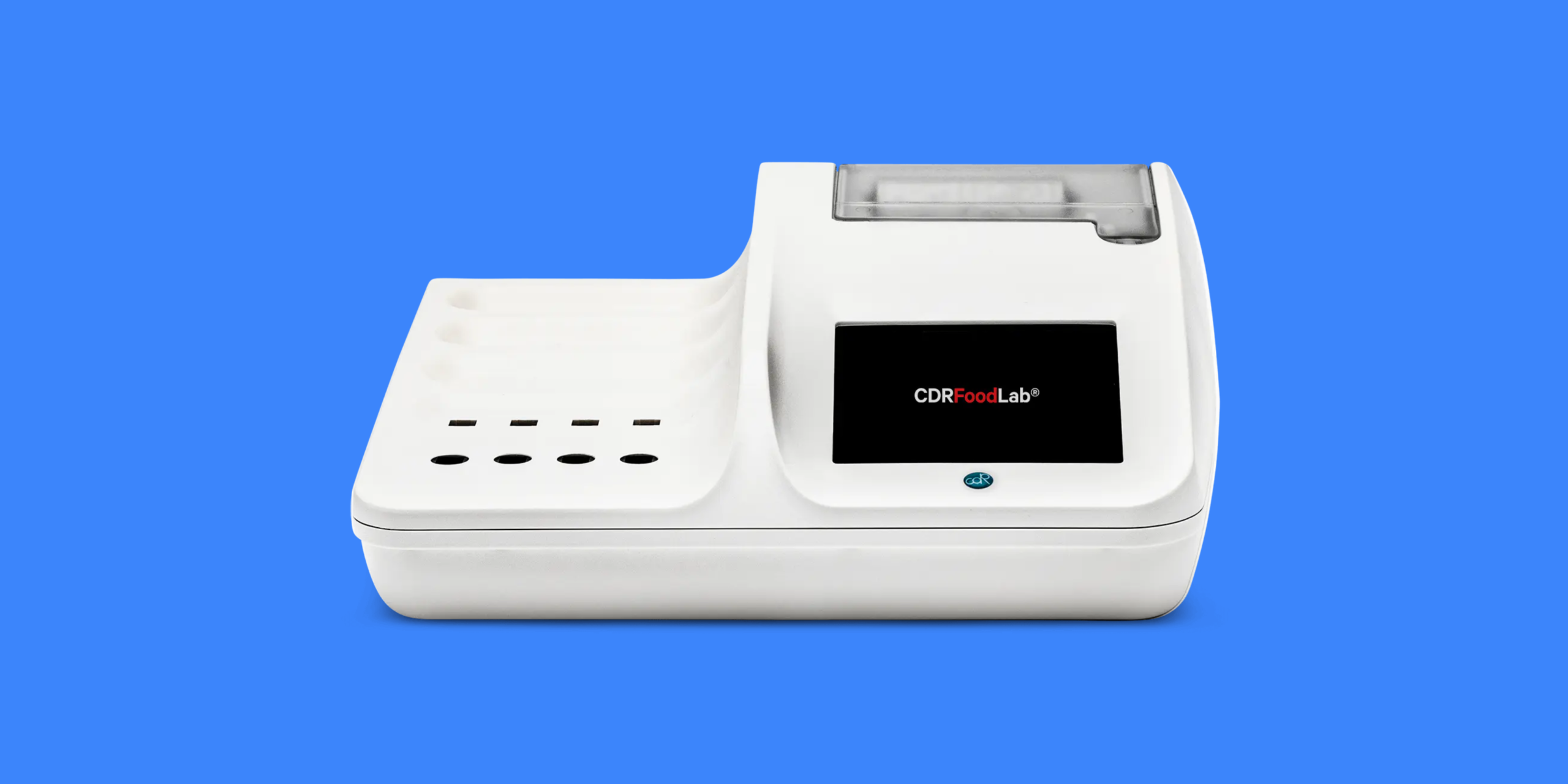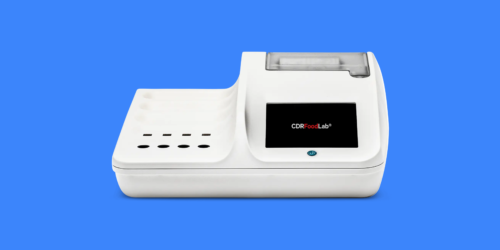- Milk and Dairy Products
- Lactose
- L-Lactic acid
- Milk Urea Nitrogen (MUN)
- Alkaline phosphatase (ALP)
- Ammonia
- Chloride
- Hydrogen peroxide
- ε-fructosyl-lisine (Furosine)
- Peroxidase
CDR FoodLab for Milk and Dairy Products
The System Designed to Perform Quality Controls on Milk and Dairy Products
CDR FoodLab® One single instrument allows you to determine a wide range of chemical parameters on milk and dairy products easily and rapidly.
CDR FoodLab® is the analysis system for milk and dairy products to perform quality controls throughout the production process.
Analytical Methods
Analytical methods are optimized for making the system easy to use in laboratory as well at receiving inspection in dairy industry. The analyzer is equipped with a measuring system owes its sensitivity, accuracy and reliability to the photometric technology based on state of-the-art LED luminous sources.
The results are correlated with the reference methods.
What you can analyze
With CDR FoodLab® you can determine a wide range of chemical parameters easily and rapidly without having to learn how to use different analysis systems.
All types of milk can be tested (cow, buffalo, goat, sheep, etc.)
The system has been designed to determine the quality of low-fat milk or whole milk, raw or pasteurized, without any kind of previous sample treatment.
CDR FoodLab® can also be used to test a wide range of cheeses and dairy products, like mozzarella, cottage cheese, yoghurt, butter, margarine with a minimal sample preparation developed by the CDR research laboratories that is far easier than official methods.
Even more
CDR FoodLab® is ideal to perform the determination of Lactose content in lactose-free dairy products to control the delactosation process, thanks to a new method much quicker and with a friendly use for everyone if it is compared to the tradional enzymatic kit
How is CDR FoodLab® System composed?
Instruments
CDR FoodLab® Analysis System uses an analyzer based on photometric technology, available in two versions, and a dedicated kit of pipettes. The ease and reliability of the system is based on exclusive technical features:

- reading cells are equipped with state-of-the-art LED emitters;
- reading and incubation cells are thermostated at 37 ° C;
- the analyzer is supplied pre-calibrated, no further calibration or maintenance is required;
- instruments can be equipped with a printer or PC connection.
Reagent Kits
CDR FoodLab® Analysis Systems use low toxicity disposable pre-vialed reagents, specifically developed by the research laboratories of CDR. The use of pre-vialed reagents and dedicated analytical procedures allows:

- a sample preparation that is quick and easy, when needed at all;
- making analytical procedures extremely fast and easy;
- removing all needs for complex calibration procedures;
- removing all needs to handle toxic or carcinogenic agents;
- making the amount of chemical waste generated only a fraction of the waste generated by standard methods.
Reagents come in packages containing 10 test tubes each, to perform 10 tests (or packages for 100 tests containing 10 single packages of 10 test tubes each).
How can you perform tests?
Performing chemical analyses on milk and dairy products is simple and fast because sample preparation, if any, is minimal. All reagents are supplied pre-vialed and ready to use, and operators do not have to handle toxic or carcinogenic compounds; there is no need to wash either containers or traditional glassware. With CDR FoodLab®, chemical tests on milk and dairy products are performed in just a few steps and results are yielded right away:
Save your time
To assess the quality of milk and dairy products, CDR FoodLab® relies on analytical procedures and dedicated reagents specifically developed by the research laboratories of CDR that allow:
- a sample preparation that is quick and easy, when needed at all;
- making analytical procedures extremely fast and easy;
- removing all needs for complex calibration procedures.
Moreover, CDR FoodLab® allows accelerating analytical procedures because it features:
- thermostated incubation cells
- multitasking mode
These features allow performing several analyses at the same time on the same sample or sixteen different assays for the same parameter on a batch of different samples. All of this in an simple and fast way.
Study of the CDR FoodLab® for analysis of milk and dairy products performed by the reference laboratory ACTALIA
The Poligny ACTALIA (France) reference laboratory, specialising in food analysis, performed an evaluation study of the CDR FoodLab® instrument on important parameters of quality control in the dairy sector such as: ammonia on serum, urea on milk and lactose on lactose-free milk. The CDR FoodLab® methods were compared to the reference methods, obtaining excellent correlation coefficients. Read More
An accurate measuring instrument
CDR FoodLab® guarantees reliable results for the tests performed on milk and dairy products. This measuring system owes its sensitivity, accuracy and reliability to the photometric technology based on LED luminous sources. Moreover, the correlation of the test results with the reference methods ensures the reliability of each and any analysis performed with the system. The CDR FoodLab® analysis system has been validated by the Standard Latte Laboratory as well as by other certified laboratories.
Comparative studies have given evidence that the accuracy of the results obtained with the CDR FoodLab® analytical method is in line with the accuracy of the results yielded by the reference methods, while CDR FoodLab® is much easier to use and provides the requested results in reduced testing time.
Determination of Lactose content in lactose-free dairy products with CDR FoodLab® in-depth
In this work a new improvement for lactose determination is assessed in terms of reproducibility, accuracy and recovery. New method and traditional enzymatic method are also taken into comparisonon adding determined aliquotes of lactose in reallactose-free matrices. The new method, that is in CDR FoodLab®, appears to be much quicker and with a friendly use for everyone if it is compared to the tradional enzymatic kit.
Analysis
A versatile analysis system
The CDR FoodLab® chemical analysis system to test milk and dairy products can be configured to perform analyses on egg products, tomato derivatives, any type of vegetable and animal fats and oils, and vegetable purées in general.
Related products
Food And Feed
Food And Feed
Food And Feed
Food And Feed



